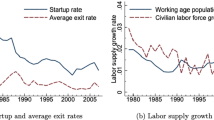Abstract
Children are special, not only to their own parents, but also for society at large. Even if society is not directly interested in children, intervention may still be justified for re-distributive reasons. The fact that children are not transferable, while income is, does in fact bias the first best in favour of households with a comparative advantage in raising children. Furthermore, visibility makes children a natural target of second-best policies (but it does not necessarily follow that family size should be subsidized, at least directly). If society is directly interested in children, maybe only because of an externality, that is an additional reason for interfering with parental decisions.
Similar content being viewed by others
References
Akerlof, G. (1978). "The Economics of 'Tagging' as Applied to the Optimal Income Tax, Welfare Programs, and Manpower Training." American Economic Review 68, 8–19.
Apps, P. and R. Rees. (1999). "On the Taxation of Trade within and between Households." Journal of Public Economics 73, 241–263.
Atkinson, A. and J. Stiglitz. (1976). "The Design of Tax Structure: Direct versus Indirect Taxation." Journal of Public Economics 6, 55–75.
Balestrino, A., A. Cigno and A. Pettini. (2002). "Endogenous Fertility and the Design of Family Taxation." International Tax and Public Finance (forthcoming).
Becker, G. (1965). "An Economic Analysis of Fertility." In A. Coale et al. (ed.), Demographic and Economic Change in Developed Countries Princeton: N.J. University Press.
Boadway, R. and M. Keen. (2000). "Redistribution." In A. B. Atkinson and F. Bourguignon (eds.), The Handbook of Income Distribution, North-Holland Amsterdam.
Chiappori, P. A. (1992). "Collective Labor Supply and Welfare." Journal of Political Economy 100, 437–467.
Cigno, A. (1983). "On optimal Family Allowances." Oxford Economic Papers 35, 13–22.
Cigno, A. (1986). "Fertility and the Tax-benefit System: A Reconsideration of the Theory of Family Taxation." Economic Journal 96, 1035–1051.
Cigno, A. (1991). Economics of the Family Oxford and New York: Clarendon Press and Oxford University Press.
Cigno, A. (1993). "Intergenerational Transfers without Altruism." European Journal of Political Economy 9, 505–518.
Cigno, A. (1996). "Cost of Children, Parental Decisions and Family Policy." Labour 3, 461–474.
Cigno, A., A. Luporini and A. Pettini. (2000). "Transfers to Families with Children as a Principal-Agent Problem." CESifo W.P. 351, Munich.
Cigno, A. and A. Pettini. (1999a). "Traitement Fiscal Optimal des Familles Quand la Fécondité est endogenè." L'Actualité Economique: Revue d'Analyse Economique 75, 239–252 [reprinted in N. Marceau, P. Pestieau and F. Vaillancourt (eds.), Economie Publique, Editions Economica, Paris, 2000].
Cigno, A. and A. Pettini. (1999b). "Taxing Family Size and Subsidizing Child-specific Commodities? Optimal Fiscal Treatment of Families When Fertility Is Endogenous." CESifo W. P. 198, Munich.
Cigno, A. and A. Pettini. (2001). "Taxing Family Size and Subsidizing Child-specific Commodities?." Journal of Public Economics, (forthcoming).
Cremer, H., A. Dellis and P. Pestieau. (2000). "Family Size and Optimal Income Taxation." IDEI and CREPP, (unpublished).
d'Aspremont, C. and L. A. Gerard-Varet. (1989). "Utilitarian Fundamentalism and Limited Information." CORE D. P. 8935, Louvain.
Mirrlees, J. (1971). "An Exploration into the Theory of Optimal Income Taxation." Review of Economic Studies 38, 175–208.
Mirrlees, J. (1974). "Notes on Welfare Economics, Information and Uncertainty." In M. S. Balch et al. (eds.), Essays on Economic Behavior and Uncertainty. North-Holland: Amsterdam.
Nerlove, M., Razin, A. and E. Sadka. (1993). "Children: A Capital Good or a Base for Income Redistribution Policies?." Public Finance 48, 78–84.
Stiglitz, J. (1982). "Self-selection and Pareto-efficient Taxation." Journal of Public Economics 17, 213–240.
Author information
Authors and Affiliations
Rights and permissions
About this article
Cite this article
Cigno, A. Comparative Advantage, Observability, and the Optimal Tax Treatment of Families with Children. International Tax and Public Finance 8, 455–470 (2001). https://doi.org/10.1023/A:1011275109138
Issue Date:
DOI: https://doi.org/10.1023/A:1011275109138




